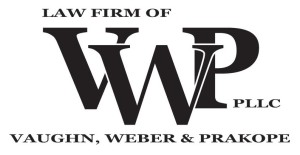As stated in two earlier posts, Governor Paterson has signed into law S.7034-A/A.8735-A which will increase the amount of New York’s bankruptcy exemptions and allow NY debtors to choose the Federal or State exemptions. A new section 285 will be added to the Debtor and Creditor Law permitting NY debtors to choose either the current Federal exemptions enumerated in 11 U.S.C. 522(d) (see below) or the new New York exemptions (see Changes to NY Bankruptcy Exemptions) .
The Federal Exemptions available under 11 U.S.C. 522(d) are:*
(1) The debtor’s aggregate interest, not to exceed $21,625 in value, in real property or personal property that the debtor or a dependent of the debtor uses as a residence, in a cooperative that owns property that the debtor or a dependent of the debtor uses as a residence, or in a burial plot for the debtor or a dependent of the debtor.
(2) The debtor’s interest, not to exceed $3,450 in value, in one motor vehicle.
(3) The debtor’s interest, not to exceed $550 in value in any particular item or $11,525 in aggregate value, in household furnishings, household goods, wearing apparel, appliances, books, animals, crops, or musical instruments, that are held primarily for the personal, family, or household use of the debtor or a dependent of the debtor.
(4) The debtor’s aggregate interest, not to exceed $1,450 in value, in jewelry held primarily for the personal, family, or household use of the debtor or a dependent of the debtor.
(5) The debtor’s aggregate interest in any property, not to exceed in value $1,150 plus up to $10,825 of any unused amount of the exemption provided under paragraph (1) of this subsection.
(6) The debtor’s aggregate interest, not to exceed $2,175 in value, in any implements, professional books, or tools, of the trade of the debtor or the trade of a dependent of the debtor.
(7) Any unmatured life insurance contract owned by the debtor, other than a credit life insurance contract.
(8) The debtor’s aggregate interest, not to exceed in value $11,525 less any amount of property of the estate transferred in the manner specified in section 542(d) of this title, in any accrued dividend or interest under, or loan value of, any unmatured life insurance contract owned by the debtor under which the insured is the debtor or an individual of whom the debtor is a dependent.
(9) Professionally prescribed health aids for the debtor or a dependent of the debtor.
(10) The debtor’s right to receive–
(A) a social security benefit, unemployment compensation, or a local public assistance benefit;
(B) a veterans’ benefit;
(C) a disability, illness, or unemployment benefit;
(D) alimony, support, or separate maintenance, to the extent reasonably necessary for the support of the debtor and any dependent of the debtor;
(E) a payment under a stock bonus, pension, profitsharing, annuity, or similar plan or contract on account of illness, disability, death, age, or length of service, to the extent reasonably necessary for the support of the debtor and any dependent of the debtor, unless–
(i) such plan or contract was established by or under the auspices of an insider that employed the debtor at the time the debtor’s rights under such plan or contract arose;
(ii) such payment is on account of age or length of service; and
(iii) such plan or contract does not qualify under section 401(a), 403(a), 403(b), or 408 of the Internal Revenue Code of 1986.
(11) The debtor’s right to receive, or property that is traceable to–
(A) an award under a crime victim’s reparation law;
(B) a payment on account of the wrongful death of an individual of whom the debtor was a dependent, to the extent reasonably necessary for the support of the debtor and any dependent of the debtor;
(C) a payment under a life insurance contract that insured the life of an individual of whom the debtor was a dependent on the date of such individual’s death, to the extent reasonably necessary for the support of the debtor and any dependent of the debtor;
(D) a payment, not to exceed $21,625, on account of personal bodily injury, not including pain and suffering or compensation for actual pecuniary loss, of the debtor or an individual of whom the debtor is a dependent; or
(E) a payment in compensation of loss of future earnings of the debtor or an individual of whom the debtor is or was a dependent, to the extent reasonably necessary for the support of the debtor and any dependent of the debtor.
(12) Retirement funds to the extent that those funds are in a fund or account that is exempt from taxation under section 401, 403, 408, 408A, 414, 457, or 501(a) of the Internal Revenue Code of 1986.
*as of 10/8/10.
We proudly assist residents of Long Island (Nassau county, Suffolk county) and New York City (Queens, Brooklyn, Bronx, Staten Island, Manhattan) with their bankruptcy filings. We are conveniently located in the heart of Nassau County, Long Island, at 393 Jericho Tpke., Ste. 208, Mineola, NY 11501.
Call (516) 858-2620 to arrange a FREE consultation with a bankruptcy attorney!



Keep in Touch